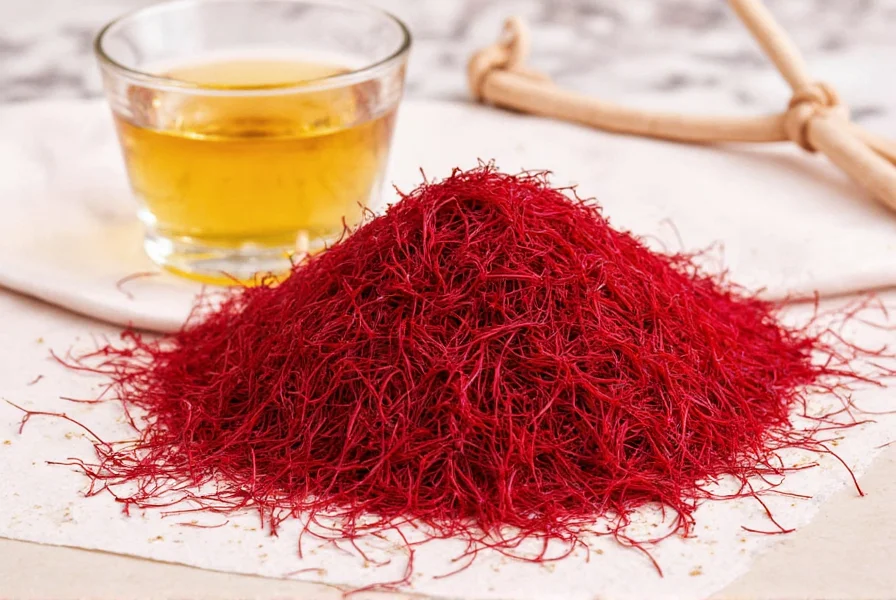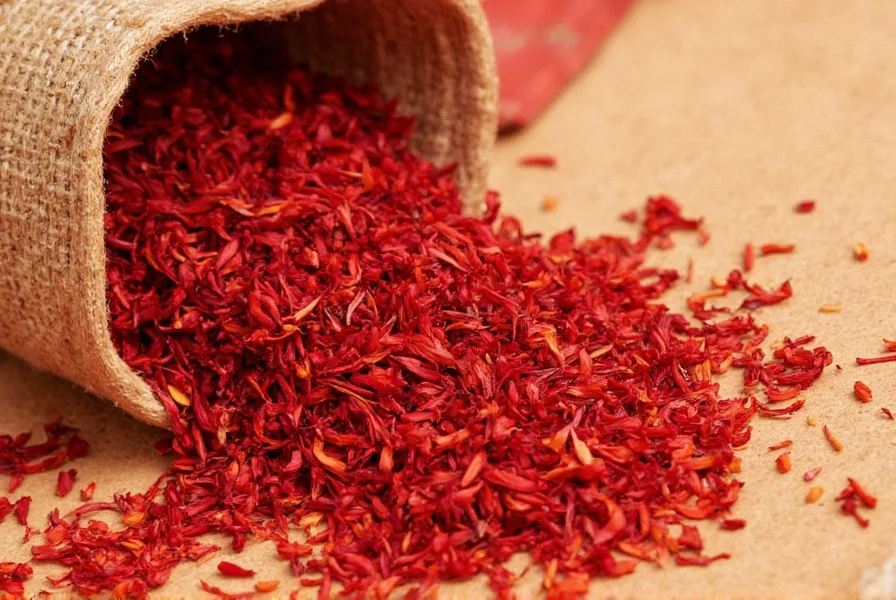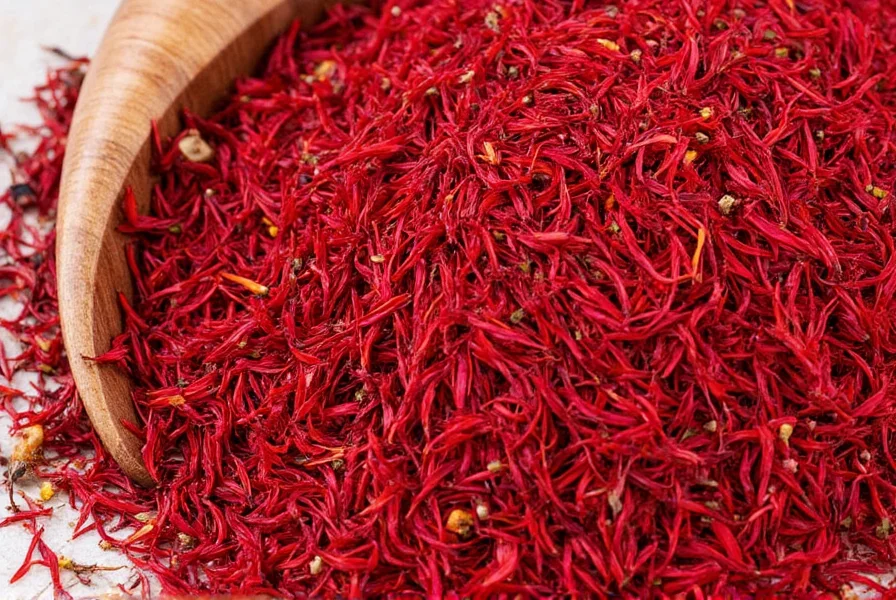Saffron's remarkable journey from flower field to kitchen spice rack represents one of agriculture's most fascinating processes. This precious spice, scientifically known as Crocus sativus stigma, has been treasured for millennia not only for its culinary properties but also for its historical significance in textiles, medicine, and religious ceremonies across multiple civilizations.
Botanical Identity and Physical Characteristics
The saffron crocus (Crocus sativus) is a sterile triploid plant that cannot reproduce sexually and must be propagated manually through corm division. Unlike many flowering plants, this crocus variety blooms in the autumn rather than spring, with each flower producing three vivid crimson stigmas that form the saffron threads. These delicate threads measure approximately 25-30mm in length and possess a distinctive trumpet-shaped end.
When properly dried, authentic saffron threads maintain their deep red color with orange tips and release a characteristic hay-like aroma with subtle metallic notes. The spice's coloring power comes from crocin, a carotenoid pigment that can color up to 100,000 times its weight in liquid, making it one of nature's most potent natural colorants.

The Labor-Intensive Harvesting Process
Understanding why saffron commands such premium pricing requires examining its harvesting process. Saffron crocus flowers bloom for only one to two weeks each autumn, typically between October and November depending on the region. Harvesting must occur early in the morning while flowers are still closed to protect the delicate stigmas from sun damage.
Each flower is carefully picked by hand, then transported to processing areas where workers separate the three stigmas from each bloom. This meticulous task requires approximately 40 hours of labor to harvest and process 150,000 flowers—yielding just 1 kilogram of dried saffron. The entire operation must be completed within a narrow seasonal window, creating significant time pressure for harvesters.
| Production Stage | Time Required | Flowers Processed | Yield |
|---|---|---|---|
| Flower Harvesting | 2-3 hours per 1,000 flowers | 150,000 | N/A |
| Stigma Extraction | 15 hours per 1,000 flowers | 150,000 | N/A |
| Drying Process | 12-24 hours | N/A | 1 kg dried saffron |
Geographical Origins and Major Producing Regions
While saffron cultivation spans multiple continents today, its origins trace back to Southwest Asia. The spice thrives in regions with specific climatic conditions: hot, dry summers followed by wet springs and mild autumns. Iran currently dominates global production, accounting for approximately 90% of the world's saffron supply, primarily grown in the Khorasan province.
Other significant saffron-producing regions include:
- Spain (particularly La Mancha region, known for high-quality production)
- Greece (Kozani region, producing PDO-protected saffron)
- India (Kashmir valley, with unique microclimate cultivation)
- Morocco (Taliouine region, smaller-scale traditional production)
Each region produces saffron with subtle variations in color intensity, aroma profile, and chemical composition, influenced by local soil conditions, climate, and processing techniques.
Culinary Applications and Proper Usage
Saffron's culinary value extends far beyond its coloring properties. When properly used, it imparts a distinctive flavor profile described as floral, honey-like, with subtle earthy notes. Professional chefs emphasize that saffron should be used judiciously—its flavor can easily dominate a dish if overused.
For optimal flavor extraction, culinary experts recommend:
- Gently toasting threads briefly in a dry pan
- Crushing threads into fine powder using a mortar and pestle
- Steeping in warm liquid (not boiling) for 15-20 minutes before adding to dishes
A single gram of saffron (approximately 40-50 threads) can flavor 4-6 servings of rice or soup. Traditional dishes featuring saffron include Spanish paella, Italian risotto alla Milanese, Persian tahdig, and Indian biryani. Understanding saffron thread identification helps prevent substitution with inferior alternatives like safflower or turmeric, which lack saffron's complex flavor profile.

Quality Assessment and Authentication
Distinguishing genuine saffron from adulterated products requires attention to several key characteristics. Pure saffron threads should exhibit:
- Deep red color with orange tips (never uniformly red or dark purple)
- Distinctive trumpet-shaped ends
- Strong hay-like aroma with subtle metallic notes
- Slow color release in warm water (gradual golden hue, not immediate)
The ISO 3632 standard classifies saffron into four quality grades based on crocin (coloring strength), picrocrocin (bitterness), and safranal (aroma) content. Category I represents the highest quality with strongest coloring properties, while Category IV indicates significantly lower quality. When purchasing saffron, understanding saffron grading system helps ensure you receive authentic product rather than common substitutes.
Storage and Shelf Life Considerations
Saffron's volatile compounds make proper storage essential for maintaining quality. Exposure to light, heat, moisture, or air rapidly degrades its flavor and coloring properties. For optimal preservation:
- Store in airtight, opaque containers away from light
- Maintain cool temperatures (below 20°C/68°F)
- Avoid humidity exposure
- Use within 6-12 months for peak flavor (though safe indefinitely)
Ground saffron loses potency more quickly than whole threads, as increased surface area accelerates degradation. Serious culinary enthusiasts often purchase whole threads and grind them immediately before use to maximize flavor impact in dishes requiring saffron culinary uses.
Frequently Asked Questions About Saffron
Why is saffron so expensive compared to other spices?
Saffron's extraordinary cost stems from its labor-intensive harvesting process. Each crocus flower produces only three stigmas that must be hand-picked at dawn. It takes approximately 75,000-250,000 flowers to produce one pound of saffron, requiring immense manual labor within a narrow seasonal window. The entire process from planting to drying cannot be mechanized, making saffron production extremely time-consuming and resource-intensive compared to other spices.
How can I tell if saffron is genuine or adulterated?
Authentic saffron threads should have deep red color with orange tips, not uniformly red or dark purple. Perform the water test: place a few threads in warm water—real saffron releases color gradually over minutes, creating a golden-yellow hue, while fake saffron (like dyed corn silk) bleeds color immediately. Genuine saffron has a distinctive hay-like aroma with subtle metallic notes, not a floral or chemical smell. The threads should feel brittle but not powdery, and when crushed, they should leave a golden stain on paper.
What's the difference between saffron and turmeric?
While both provide yellow coloring, saffron and turmeric are completely different substances. Saffron comes from crocus flower stigmas and offers a complex flavor profile with floral, honey-like notes and subtle bitterness, while turmeric is a root in the ginger family with earthy, slightly bitter taste. Saffron imparts a golden-orange hue, whereas turmeric creates a brighter yellow. Saffron contains crocin as its primary coloring compound, while turmeric's color comes from curcumin. Saffron is significantly more expensive and used in smaller quantities than turmeric in cooking applications.
How much saffron should I use in cooking?
Saffron is potent and should be used sparingly. A general guideline is 15-20 threads (about 0.1 gram) for 4-6 servings of rice or soup. Professional chefs recommend starting with smaller amounts and adjusting to taste, as too much saffron can create an unpleasantly bitter flavor. For optimal results, toast the threads lightly, crush them, and steep in warm liquid for 15-20 minutes before adding to your dish. Remember that saffron's flavor develops slowly during cooking, so it's better to start with less and add more if needed rather than overusing initially.
Does saffron have any health benefits?
Traditional medicine systems have used saffron for various purposes throughout history. Modern research suggests saffron contains compounds with antioxidant properties, and some studies indicate potential mood-supporting effects. However, the quantities typically used in culinary applications are too small to provide significant health benefits. Most scientific research on saffron's potential health effects uses concentrated extracts in much higher doses than would be consumed in normal cooking. As with any food product, saffron should be enjoyed primarily for its culinary value rather than as a health supplement.











 浙公网安备
33010002000092号
浙公网安备
33010002000092号 浙B2-20120091-4
浙B2-20120091-4